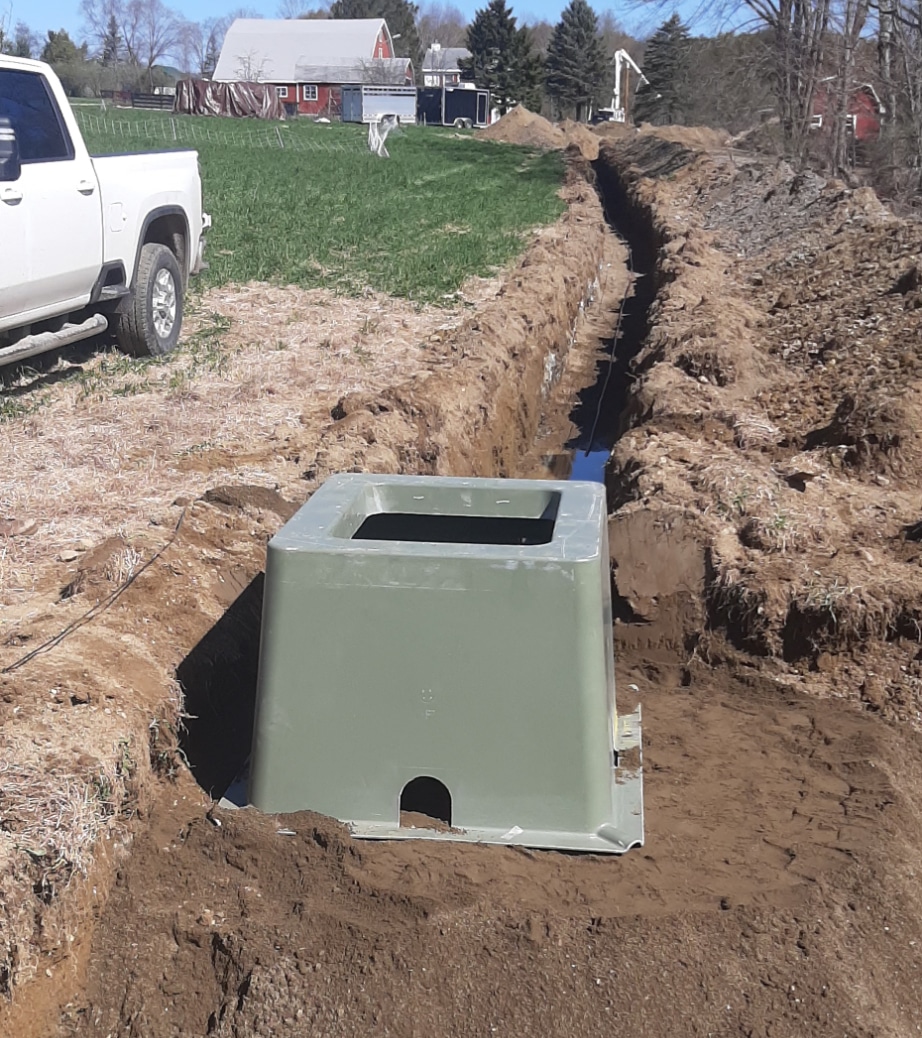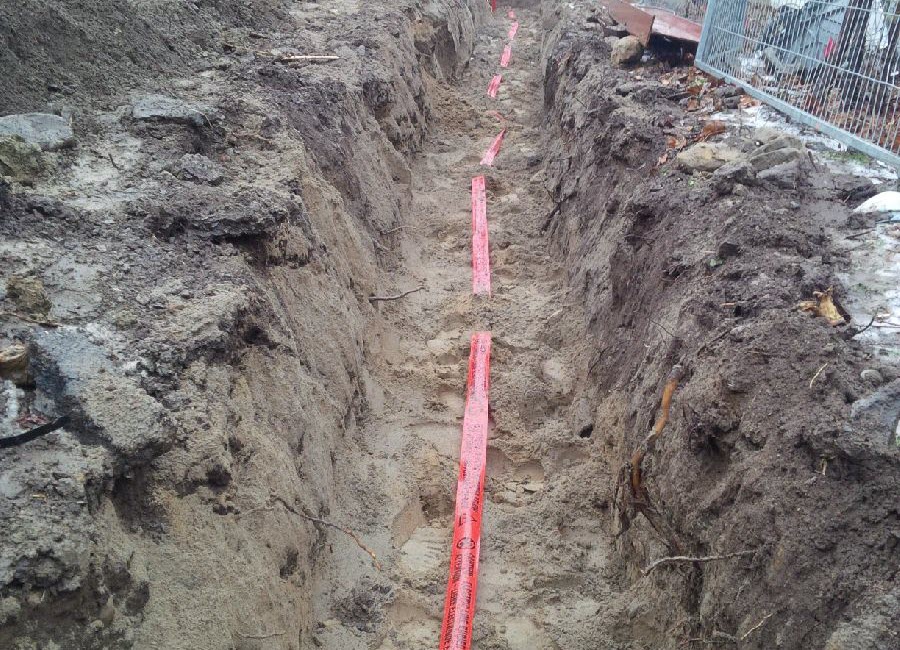Electric Line Servicesin Marine City MI
Service Electrical Lines Installed for Safe and Reliable Power
We Are Locally Owned & Operated For Over 37 Years
Contact Us Today!
We Serve Businesses In And Around The Following Cities:
About Electric Line Services
Introduction: Powering Marine City’s Commercial Sector
As the commercial heartbeat of Marine City pulses with vibrancy, a reciprocal energy feeds the liveliness of the business sector: the power of electric lines. An arterial network surging with ground electricity, ready to energize commercial growth. These towering structures lacing the city’s skyline represent more than the vital link between supply stations and commercial properties — they embody the promise of reliable power, innovation and economic progression.
In this comprehensive guide, we delve deep into the world of electric lines in Marine City, exploring their installation, benefits, and real-world applications for commercial properties. This is not just a ground-level view; this aims to enlighten businesses about the indispensable role of electrical infrastructure in achieving their potential growth and success.
Electrical Installation: Laying the Groundwork for Business Power
Installing an electric line might seem like a daunting prospect, but with the mastery of professionals like D&J Contracting, the process is streamlined and efficient. These experts evaluate the property’s electrical needs, design a customized installation plan, and promptly implement it. Throughout the process, their primary focus is to ensure safe, optimum power supply, and prevent power disruptions in the commercial sector.
From businesses located downtown to those nestled in the quieter streets of Marine City, these professional installers engineer solutions that integrate seamlessly into the city’s electrical grid, embodying ground electricity’s versatility for varied commercial needs.
Lighting Up Commercial Success: The Benefits of Electric Lines
A reliable electric line in a commercial building is like a lifeline. It powers everything from lighting systems to high-demand appliances and machinery. Marine City’s businesses, big or small, rely on a steady flow of electricity to function and prosper.
In the context of commercial real estate, improved energy efficiency and reduced operational costs are among the significant benefits of professional electric line installation. D&J Contracting specializes in creating and maintaining systems that minimize power wastage. Effective insulation, electrical paths designed for efficient transmission and regular maintenance checks are some of their strategies to improve energy efficiency and deliver long-term savings to businesses.
The capacities go beyond tangibles. Enhanced business continuity due to lesser power outages and increased productivity are some indirect but valuable benefits that solidify the importance of reliable electric lines in commercial spaces.
Real-World Applications: The Business Side Of Electric Lines
From bustling retail shops to quiet office spaces, every commercial property in Marine City has a unique narrative of electrical utilization. In the retail sector, bright lights, eye-catching signs, and dependable point-of-sale systems all rely on electric lines for smooth operation. In food businesses, reliable electricity ensures the refrigeration stays cold, ovens stay hot, and customers stay happy.
Office buildings, brimming with computers, servers, air conditioning units, and elevators, have a crucial need for steady electricity. Any disruption could lead to significant operational downtime. In such buildings, professionals like D&J Contracting install robust electric lines, ensuring an uninterrupted power supply and reducing the risk of expensive shutdowns.
Whether it’s a row of town shops or an industrial zone humming with heavy machinery, the electric line system’s significance for the commercial fabric of Marine City is clear. Its relevance to the city businesses’ operation and growth is an undeniable testament to its importance.
The D&J Contracting Advantage
Driving the robustness of Marine City’s commercial electricity landscape is D&J Contracting. With extensive experience and a high level of expertise, their services extend beyond just installation. They are trusted partners for maintenance, essentially providing a one-stop solution for electrical needs of commercial properties. Through timely service, they ensure that the city’s businesses can focus on their cores, without worrying about their electrical lifeline.
Reflecting on the Power of Electric Lines in Marine City
In a city as dynamic as Marine City, a reliable flow of electricity spells more than just convenience. It’s a testament to the unwavering spirit and resilience of the commercial sector, unhindered by power disruptions. It’s the assurance for businesses, big and small, to dream big and grow without limits.
The electric lines, a subtle backdrop to the city’s skyline, represent a powerful promise — the promise of progress, prosperity, and a vibrant future. In these towering structures, we see the quiet yet potent factor powering the city’s commercial heartbeat, fostered by end-to-end service providers like D&J Contracting.
If you are a business owner looking to plug into the city’s electrifying potential, it’s time to rethink your electrical strategy. With experts like D&J Contracting, embark on a journey towards optimized, reliable ground electricity. It is more than just a connection; it’s a solid investment in your business’s future success.
Electric Line Services Gallery


Call Us Today to receive your Free Quote for
Electric Line in Marine City
Serving: Marine City, Michigan

About Marine City, Michigan
The area of Marine City had been Ojibwa territory for centuries before the first European contact. Beginning in the 17th century, French trappers and missionaries entered the territory, followed by settlers in the colonial period on both sides of the Detroit and St. Clair rivers. Farmers developed long, narrow plots that were laid out in the typical rectangular shape of colonial French, with the narrow end along the riverfront. The first Catholic Church was built by French Catholics at Catholic Point, where they had bought land before the United States was formed. French Canadians also lived on the other side of the river in a small farming community known as Petite Côte.
It was not until after the American Revolution that European-American settlers arrived in any number. In the 1780s they obtained a deed for land from the Chippewa Indians. The Americans began to call the community “Yankee Point”, because so many settlers came from the Northern Tier of states, with late 18th and 19th-century westward migration originating from New England and New York. They also called the settlement “Belle River” (Belle Riviere in French), as the French had; this later was applied as the name of a neighborhood.
The village was platted by Americans as Newport in 1835–37. Although never incorporated by that name, it was known as “Newport” for 31 years. In 1865, it was incorporated as the Village of Marine City. Thriving on lumber trade and shipbuilding, the village re-incorporated as a city in June 1887.
The second half of the 19th century was the period of great growth in the village, with many workers employed in the lumber and shipping industries. Rafts of lumber were moved down the St. Clair River in the spring to be worked at Marine City or Detroit. Shipyards built some of the many wooden ships that crossed the Great Lakes. Lake steamers linked passengers with small towns around the lakes. Their decks were full and their flags were flying. Marine City was centered on a park by the St. Clair River, where bands played in the bandstand at City Hall during the summer.
As the lumber business ran down with the exploitation of forests, the area became linked to other resource extraction. Freighters carried iron from Duluth, Minnesota, which had been mined in the Mesabi Range, to Ashtabula, Ohio for steel processing. They passed from Lake Superior through Lake Huron and to Lake Erie. Marine City was known as the town on the St. Clair River where the captains of lake freighters lived. Many of these men and their crews worked for the Pittsburgh Steamship Company. Formed in 1901 by US Steel Corporation, it became the largest commercial fleet on the Great Lakes.
In the 21st century, Marine City has become the home of ten antique stores. The Snug Theater is a 98-seat theater featuring live performances. It will be joined in 2014/15 by a sister theater, The Riverbank Theater, in a former bank building (originally Marine Bank & Trust) down the street. Also joining the two acting theaters is the old Mariner Theatre, which serves as a special event center, movie theater, gallery for fine art Models, and site of the builders model for the ocean-going Titanic. Restaurants and retail in downtown also cater to visitors and residents.
The Heather House, now operated as a bed and breakfast, was built in the Queen Anne Victorian-style. It was completed in 1885 after 2 years of construction for its owner, William Sauber. He was chief engineer for the Mitchell fleet of Great Lake steamers.
- According to the United States Census Bureau, the city has a total area of 2.46 square miles (6.37 km), of which 2.15 square miles (5.57 km) is land and 0.31 square miles (0.80 km) is water.
- It is considered to be part of the Thumb of Michigan, which in turn is a subregion of the Flint/Tri-Cities.
- Marine City can also be considered as in the Blue Water Area, a subregion of the Thumb.
- It is part of the Detroit-Warren-Livonia Metropolitan Statistical Area (MSA) and the Detroit-Ann Arbor-Flint Combined Statistical Area (CSA).
| Census | Pop. | Note | %± |
|---|---|---|---|
| 1870 | 1,240 | — | |
| 1880 | 1,673 | 34.9% | |
| 1890 | 3,268 | 95.3% | |
| 1900 | 3,829 | 17.2% | |
| 1910 | 3,770 | −1.5% | |
| 1920 | 3,731 | −1.0% | |
| 1930 | 3,462 | −7.2% | |
| 1940 | 3,633 | 4.9% | |
| 1950 | 4,270 | 17.5% | |
| 1960 | 4,404 | 3.1% | |
| 1970 | 4,567 | 3.7% | |
| 1980 | 4,414 | −3.4% | |
| 1990 | 4,556 | 3.2% | |
| 2000 | 4,652 | 2.1% | |
| 2010 | 4,248 | −8.7% | |
| 2020 | 4,079 | −4.0% | |
| U.S. Decennial Census | |||
As of the census of 2010, there were 4,248 people, 1,765 households, and 1,117 families residing in the city. The population density was 1,975.8 inhabitants per square mile (762.9/km). There were 2,015 housing units at an average density of 937.2 per square mile (361.9/km). The racial makeup of the city was 96.8% White, 0.3% African American, 0.7% Native American, 0.2% Asian, 0.5% from other races, and 1.6% from two or more races. Hispanic or Latino of any race were 1.7% of the population.
There were 1,765 households, of which 31.1% had children under the age of 18 living with them, 44.6% were married couples living together, 13.3% had a female householder with no husband present, 5.4% had a male householder with no wife present, and 36.7% were non-families. 31.3% of all households were made up of individuals, and 14% had someone living alone who was 65 years of age or older. The average household size was 2.41 and the average family size was 3.00.
The median age in the city was 40.2 years. 22.9% of residents were under the age of 18; 8.2% were between the ages of 18 and 24; 25.8% were from 25 to 44; 27.9% were from 45 to 64; and 15.3% were 65 years of age or older. The gender makeup of the city was 48.2% male and 51.8% female.
As of the census of 2000, there were 4,652 people, 1,860 households, and 1,212 families residing in the city. The population density was 2,120.8 inhabitants per square mile (818.8/km). There were 2,006 housing units at an average density of 914.5 per square mile (353.1/km). The racial makeup of the city was 97.29% White, 0.09% African American, 0.56% Native American, 0.26% Asian, 0.86% from other races, and 0.95% from two or more races. Hispanic or Latino of any race were 1.38% of the population.
There were 1,860 households, out of which 33.5% had children under the age of 18 living with them, 48.2% were married couples living together, 12.7% had a female householder with no husband present, and 34.8% were non-families. 30.8% of all households were made up of individuals, and 14.4% had someone living alone who was 65 years of age or older. The average household size was 2.50 and the average family size was 3.15.
In the city, the population was spread out, with 27.6% under the age of 18, 8.2% from 18 to 24, 30.5% from 25 to 44, 19.4% from 45 to 64, and 14.2% who were 65 years of age or older. The median age was 36 years. For every 100 females, there were 90.4 males. For every 100 females age 18 and over, there were 88.6 males.
The median income for a household in the city was $40,146, and the median income for a family was $47,308. Males had a median income of $39,228 versus $23,677 for females. The per capita income for the city was $19,722. About 7.6% of families and 8.9% of the population were below the poverty line, including 9.0% of those under age 18 and 16.1% of those age 65 or over.
Call Us Today to receive your Free Quote for
Electric Line in Marine City
Related Services in Marine City, Michigan
We Serve Businesses In The Following Zip Codes:
48007, 48015, 48021, 48026, 48035, 48036, 48038, 48042, 48043, 48044, 48045, 48046, 48047, 48048, 48050, 48051, 48066, 48071, 48080, 48081, 48082, 48083, 48084, 48085, 48088, 48089, 48090, 48091, 48092, 48093, 48098, 48099, 48225, 48230, 48236, 48310, 48311, 48312, 48313, 48314, 48315, 48316, 48317, 48318, 48397